There are very few examples of art forms which combine extremes in such a compelling way: joy and grief, life and death, discipline and spontaneity, the inner self and the gregarious mass . . .
The thing about flamenco is that even though it’s very popular music, often featuring lyrics of anonymous origin, and the performers remain faithful to oral tradition, they may also reach stardom and enjoy long-lasting appreciation for their contribution, that is, their own style and unique personality. One of the phrases frequently used by performers in flamenco concerts is:
«Vamo’ acordarno’ de . . . «
which means, «Let’s remember…», followed by the name of the character to be evoked.
⇓ Flamenco radio // Flamenco TV …⇒
«Flamenco, as we know it today, began to emerge at the end of the 18th century – although there is evidence to suggest that primitive forms were quietly gestating in gypsy enclaves in southern Andalusia much earlier than that. Flamenco did not however emerge from this semi-clandestine domesticity until the mid-19th century, when it made its first appearance on the public stage. «The genealogy of flamenco is linked with a long series of musical contributions. In strict terms, flamenco evolved from a range of very different legacies bequeathed by the ancient mixture of cultures in Andalusia: Hindu and Greek psalms, Gregorian chants, Persian melodies, Mozarabic dirges, Jewish laments, Morisco songs, Castilian romances, African son dances . . . «All these ingredients, fused with indigenous Andalusian rhythms, resulted in a new musical structure which came to be known as flamenco. The gradual diversification of styles is yet another consequence of the inexhaustible capacity for innovation of the flamenco genre, which lends itself very well to the creative powers of individual artists and is one of the most remarkable forms of popular music in Western Europe.» J.M. Caballero Bonald•→Flamenco – Its Origin and evolution←
∇ Carlos Saura’s FLAMENCO ⇑ [1995]
- «Prologo» by Isidro Muñoz (guitar)
- «Bulerias» by Moraíto Chico & Niño Jero (guitars), La Paquera & Fernando de la Morera (singers)
- «Guajira» by Merche Esmeralda (dancer), Jose Antonio Rodriguez, El Portugues, Pepe de Lucía
- «Alegrias» by Diego Carrasco (singer), Manolo Sanlucar & Juan C. Romero (guitars)
- «Farruca» by Joaquin Cortes, Juan P. Munoz (violin), Fernando Anguita (cello), Pedro Anton (guitar)
- «Martinete» by C. Moneo (singer), Mario Maya, Antonio Vargas & Israel Galvan (dancers)
- «Fandangos de Huelva» by Antonio Toscano, Jose A. Rodriguez & Juan C. Romero
- «Soleares» by Fernanda de Utrera (dancer), Paco del Castor (guitar)
- «Petenera» by Jose Menese (singer), Maria Pages (dancer), Jose A. Rodriguez (guitar)
- «Seguirilla» by Enrique Morente (singer), Juan Manuel Canizares (guitar)
- «Soleares» by Manuela Carrasco (dancer), Jose Merce (singer)
- «Soleares»- performed by Farruco and Farruquito (dancers), Chocolate (singer), R. Amador (guitar)
- «Taranta» by Carmen Linares (singer), Rafael Riqueni (guitar)
- «Tangos» by Juana la del Revuelo, Remedios Amaya & Aurora Vargas, Quique Paredes & Martin Chico.
- «Villancicos» by La Macanita (singer), Juan Parrilla & Niño Jero (guitar)
- «Bulerias» by Lole (singer), Manuel (guitar)
- «Alegrias» by Matilde Coral… (dancers), Rancapino & Chano Lobato (singers), Paco Jarana (guitar)
- «Tangos» by Paco de Lucia & Ramon de Algeciras (guitar), Pepe de Lucía (singer), Carlos Benavent (bass), Jorge Pardo (flute), Ruben Danta & El Grilo (percussion)
- «Bulerias» by Potito & Duquende (singers), Tomatito (guitar), El Grilo & Belen Maya (dancers)
- «Rumba» by Manzanita & Antonio Carmona (singers), Juan J. Carmona & Jose Miguel Carmona (guitars), Carlos Ruiz & Javier Benegas (percussion)
•→[English]⇐ Flamenco glossary ⇒[Spanish]←•
• flamencoexport.com/diccionario⇒
•→canteytoque.es/letras.html⇐[lyrics]
∇ FLAMENCO TV ⇓ 2011
⇒ «el sol, la sal, el son» ⇐
MC→Jesús Quintero←
¤ Flamenco today
 The cante (singing), toque (guitar playing), baile (dance) and palmas (handclaps) still are the main ingredients of flamenco. Perhaps the major novelty at the end of the century (apart from the hideous abuse of amplification) was the introduction of the cajón, an Afro-Peruvian box-shaped percussion instrument which has made modern performers less dependent on wooden-boarded floors and on taconeo itself (i.e. footwork).
The cante (singing), toque (guitar playing), baile (dance) and palmas (handclaps) still are the main ingredients of flamenco. Perhaps the major novelty at the end of the century (apart from the hideous abuse of amplification) was the introduction of the cajón, an Afro-Peruvian box-shaped percussion instrument which has made modern performers less dependent on wooden-boarded floors and on taconeo itself (i.e. footwork).

Flamenco music styles are called →palos←. Songs are classified into palos based on criteria such as basic rhythmic pattern, mode, chord progression, form of the stanza, and geographic origin. Some of the forms are sung unaccompanied, while others usually have guitar or other accompaniment. Some forms are danced while others are not . . . There are over 60 different palos, although some are rarely performed. The most important (in red) are explained after the samples below.
♦ → MACANITA ↓ por bulerias
The more vivacious side of flamenco is exemplified by the bulería, a style related to the soleá, of which it is basically an up-tempo version. It takes its rhythmical structure from the soleá, although with slight variations to the accentuation. Being more vigorous, it falls within the category of ‘festero’ styles, and this can also be felt in the subject matter of the lyrics, which are less solemn and more light-hearted.
· · · Solea ⇓ [2002]
Tomasa Guerrero Carrasco ‘La Macanita’ gets her name from her father, El Macano. Born in Jerez de la Frontera in 1968, she has excelled in cante since she was a little girl. In 1985, in the company of El Torta, Ramírez, Moraíto Chico and El Capullo, she performed for a season at the Madrilenian tablaos Los Canasteros and Zambra. After touring several countries, she takes part in the historic recording ‘Tauromagia’ by Manolo Sanlúcar. In 1988 she joins the Manuel Morao Company and Gitanos de Jerez, making her début with the show ‘Flamenco. Esa forma de vivir’.
♦ Jesús Méndez ↓ Malagueña del Mellizo [Sevilla 2011]
Jesús Méndez was born (1984) in the heart of one of the most important cantaor families ever to come out of Jerez, that of Los Méndez, whose flagship was La Paquera de Jerez. His career began at the age of seventeen, when he decided to get up on stage and try his luck. Following his début in the year 2002 at the D. Antonio Chacón Cultural Association in Jerez, the young Jerez-born cantaor has worked with artists of the likes of Moraíto Chico, El Güito, Rocío Molina, Alejandro Granados, María del Mar Moreno and Carmen Cortés, among others.
… ⇒ Bulerías [Jerez_2014] Tribute to Juan Moneo «El TORTA»
♥ Montse Cortés ↓ ‘Mira que gitana soy’ (Bulerías) + Paco Heredia [2011]
A great gipsy voice from Barcelona. Born 1963, she performed her «cante pa’atras» for a long time (literally, «singing from behind»; singing for dancers, often with the singer standing) before she went solo after the release of her album «Alabanza» (2000). Many top-class flamenco cantaores would agree that «cante pa’atras» is the best possible way of mastering time-keeping, i.e.»compás«: rhythmical structure of a flamenco style, each with its own stress pattern.
⇓ ‘Me voy pa los callejones’
♦ José Menese & Antonio Carrión ↓ [bulerías por soleá]
Though non-Gipsy himself, he was gifted with a Gipsy-like voice. A most honest cantaor, Menese will always stand out for purity («pureza»): cante jondo at its best, flamenco cabal, impervious to frivolous fusions: no concessions to commercial pressure.
♦ ♦ → Carmen Linares + Pedro Sierra ↓
tarantas→
María del Carmen Pacheco Rodríguez, one of the most relevant flamenco singers, was born in Linares, Jaén, in 1951. She started in the flamenco world in the midst of her family, since her father was an amateur guitarist from Linares. In 1965 she moved to Madrid, where she got in contact with her first teachers: Juan Varea, El Gallina, Pepe el de la Matrona and La Perla de Cádiz, amongst others.
In 1996 she released her most important record and perhaps the most relevant of all the recent flamenco albums: ‘Carmen Linares en antología, la mujer en el cante’, where she journeys through all the creations that have made women in flamenco.
♥ → LA TOBALA + Pedro Sierra ↓ Tangos [Homenaje a Camarón]
Juana Salazar, La Tobala, started in the flamenco world at tablaos in Seville such as Los Gallos and La Trocha. Shortly thereafter, she establishes residence in Madrid and begins to perform at the tablao Zambra. Throughout her career, with her cante she has accompanied top dance figures. As a solo cantaora, she’s recorded seven albums produced by her husband, guitarist Pedro Sierra: ‘Dime sí en la vida’ (1989), ‘Jardanay’ (1993), ‘Espejo del Alma’ (1995), ‘Rincones de sueños puros’ (1997), ‘Duquelas’ (1999), ‘Azul’ (2004), and ‘Leguaje Puro’ (2008).
It is assumed that tangos have African origins, and that they arrived back in the Andalusian ports of Seville and Cadiz once they had passed through the Cuban filter during the Spanish colonial period. Tangos are a flamenco style in 2/4 and 4/4, the tie signatures that underline the majority of musical styles around the world. Dance is fundamental to tangos . . . a sensual and provocative dance style, with popular origins, for celebrations. Tangos are sometimes used as a coda, or as the continuation ot its more down-tempo relative, los tientos, sung in a deep and phlegmatic manner. The style is also related to tanguillos, which appear to be accelerated tangos, but whose compás is actually complex and polyrhythmic.♦ ◊ Pansequito + Moraito ↓ [hosted by Jesús Quintero]
José Cortés Jiménez, Pansequito [1946-2023] was born in La Línea de la Concepción, but he grew up in another town in the Cádiz area, El Puerto de Santa María, which gave him his stage name in the early days. Manolo Caracol listened to him when he was fifteen and hired him to work at his famous tablao in Madrid, Los Canasteros. In that period, he sang for dancing both at tablaos and in dance companies, among them, that of Antonio Gades. Then considered a renovator of cante, he won the ‘Prize for Creativity’ at Córdoba’s 1974 National Contest, which has never been awarded again . . .
←alegrias de Cádiz
♦ ♦ → Esperanza Fernández + Miguel Angel Cortés ↓ [mariana]
Esperanza Fernández Vargas was born in Sevilla in 1966 within a family professionally devoted to flamenco. At the beginning her chosen form of artistic expression was dance: she took lessons from Pepe Ríos and Manolo Marín. However it was her devotion to Lole Montoya which motivated her to excel in song.
She knows orthodox flamenco to perfection, but at the same time searches out for other music such as jazz … So far, she has only released two records by her name
←solea
Although it hasn’t been proven that genealogically this was the first style, there can be little doubt that the soleá embodies the essence of flamenco in terms of rhythm, cadence, expression and melody. The rhythmical structure is divided into twelve beats, with an amalgam of 6/8 and 3/4 time, thus adapting to the structure of three or four octosyllabic verses. Musically-speaking, it’s based on the Andalusian scale – a definitive musical feature of flamenco. Musicologist García Matos suggests its name may be taken from a lyric referring to «soledad», or solitude.
♣→ Arcángel & Miguel Ángel Cortés ⇓ [fandangos de Huelva]
Francisco José Arcángel Ramos was born in Huelva in 1977. At ten years of age he was already an artist, performing the ‘fandango´ styles of his homeland to perfection. Not surprisingly, on various occasions he won the prize that the Orden de Huelva Club organises yearly for the youngsters of the area, which motivated him to pursue a singing career.
He went to work in Sevilla at an early age, where he entered into contact with dance, currently practising this profession He sang for Cristina Hoyos, Israel Galván, Javier Barón, El Pipa and, above all, Eva la Yerbabuena, to whose company he has belonged for years He became an established artist in the Biennial Flamenco Exhibition in 1998, where he was in demand by an infinite number of artists
◊ Arcángel & Juan Carlos Romero ⇓ ‘Los aires llevan mentiras’ [soleá]
♦ Rancapino + Juan Carmona ‘Habichuela’ ⇓ [Granaina + Malagueña del Mellizo]
One of the virtues that I admire the most in Alonso is his humility. He has never bragged about anything, even as has every right to do so, as he basically invented temple in cante. He’s able to sing extremely slowly, like Curro Romero and Rafel de Paula used to bullfight, always taking compás to the right spot, vocalizing perfectly without screaming, because raising the voice is one thing, and hawking fish is quite another.
Alonso Núñez Núñez. Chiclana de la Frontera (Cadiz), 1945. Gipsy deeply committed to the jondo way of life; totally given over to flamenco, which he has lived from his early childhood, a companion in adventures of Camarón. They were very close when they used to go to the Venta de Vargas to wait for a meeting to earn a few pesetas. Then, when he began to work at the tablaos and festivals, their lives went different ways, as Rancapino has always been quite a modest singer, only attaining wider appreciation in recent years.
♦ Rancapino + José Luis Postigo ⇓ [alegrias de Cadiz]
Alegrías is the best-known flamenco style from the cantiñas group, and are the result of a fusion between the soleá and a traditional song from Aragón in Northern Spain called the ‘jota’. This process of fusion took place in Cádiz during the resistance to the Napoleonic invasion of 1808, in the Peninsular Was for Spanish independence. Both the meter and the rhythmical structure match that of the soleá, with a different pattern of accentuation.
♦→ Vicente Soto «Sordera» ⇓ «Coplas del Desagravio» (minera y cartagenera) [2018]
♦ Miguel Poveda + Moraito (RIP) ⇓ «Seguiriyas»
Born Miguel Ángel Poveda León in Barcelona on February 13, 1973, Poveda began singing publicly in 1988, accompanying his sister, flamenco dancer Sonia Poveda. He established himself as a rising star within the flamenco community after winning four prizes at the 1993 Festival Nacional del Cante de las Minas in La Unión, including the highest honor, La Lámpara Minera, as well as La Cartagenera, La Malagueña, and La Soleá. No one else had accomplished such a feat since Antonio Fernández Díaz (aka Fosforito) in 1956, and the accomplishment was all the more noteworthy because, unlike most flamenco singers, Poveda is neither Andalusian nor Gipsy.
The feeling of solemnity, the existentialism of the lyrics, the intense wailing of the ‘quejío’… these are the ingredients that make the seguiriya the very core of cante flamenco. The compás of this style is, as with the soleá, an amalgam of 3/4 and 6/8 time. The seguiriya, sigueriya or seguirilla takes its name from the Castilian ‘seguidila’, which is realated to, at least in terms of the lyrical structure.
Closely related to the seguiriya is the cabal, a passage used to round off a series of seguiriyas, and which is sung with a different harmony (shifted to a major key). From the same family and with an identical compás structure come several other styles. The martinete is a style which originated in the forges, sung by the smiths. The debla is based on the framework laid down by Tomás Pavón, while tonás have their roots in romances… Lastly there are the carceleras (jail songs), the difference here being that they are sung with no musical accompaniment. Also related to the seguiriya we have the liviana and the serrana, originally with a pastoral theme. These cantes were folk songs which gradually acquired a flamenco flavor, and which have a fixed melody. Saetas, which are drawn from the songs of the Holy Week parades, are often sung in their flamenco version without music and utilizing a seguiriya or martinete structure. Flamenco dance por seguiriyas – as with the vocals – is intimate, restrained, solemn and austere, and is one of the essential styles in the repertoire of the professional flamenco dancer.
♦ José de la Tomasa & Julian Estrada ⇓ [Bienal Flamenco-Sevilla 2012]
◊ Antonio de los Santos Bermúdez Agujetas (born 1962), son of maestro Manuel Agujetas, interviewed by Jesús Quintero after doing time for twelve years. The clip opens with some ‘saetas’, and closes with ‘fandangos’ ↓
←carcelera
♦ Antonio Núñez, el Chocolate & Antonio Carrión ⇓
Antonio Núñez Montoya (1931-2005). Perhaps the most beautiful voice ever to be heard in flamenco (though there’s no need for a beautiful voice to sing flamenco). He was a gipsy man born in Jerez de la Frontera (Cádiz) and soon moved to Seville, which brings down a bit the natural rivalry between both flamenco Meccas… He began to sing when he was nine, on the trains to Huelva or Alcalá de Guadaira, suffering all the misery and sweat in the world, until he earned his first spondulicks one night at the Alameda de Hércules in Seville: «I would never leave that place».
He perhaps left more of a personal mark on the fandango than any other singer, in long thirds with a most peculiar liaison. «The fandango», he says, «are the carnations of Andalusia (…) The fandango is very difficult and beautiful to play; you have to get at its pellizco (pinch), and there are very few singers with that pinch, who transmit our cante to the aficionados and the profane, because it has to be transmitted to both. When a fandango is sung properly, it will reach anyone before. I had to learn to sing fandangos before being able to learn to sing soleá or siguiriya …».
– seguiriyas de Manuel Torre ↓
♦ Antonio Fernández Díaz, ‘Fosforito’ ⇔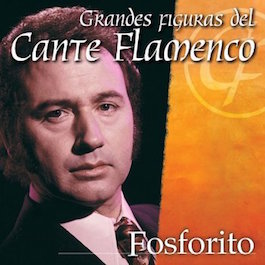
Antonio Fernández Díaz, Fosforito, was born in Puente Genil in 1932 He is considered one of the maestro´s of song of the twentieth century He began to sing as a child, but his great leap occurred in Cordoba´s First National Competition of Flamenco Art, celebrated in 1956, where he won all the prizes. He rubbed shoulders in the fifties and sixties with maestros such as Pepe Pinto or Juan Valderrama, he sang in America to Manuela Vargas and travelled all the American coast in 1964 with the motive of the Universal Exposition along with his friend Juan Habichuela.
♦ Diego el Cigala + Tomatito ↓ [taranta]
Born in Madrid in 1968, Diego Jimenez Salazar «El Cigala» (the crawfish) comes from a family of artists, including his uncle Rafael Farina. He grew up in the area of the Madrid flea market, which was the scene of his first childhood engagements as a singer.
♦ Manuel Moreno ‘El Pele‘ + Vicente Amigo ⇓ Solea [1990]
♦ Cancanilla (de Marbella Málaga) ⇓ Solea
guitarra = José Antonio Núñez
♦ → Camarón + Tomatito ↓ Soleares de Cádiz
»Camaron no murió; se lo llevó dios para que le cantase»When he started to become important and had evidently reached maturity, he began to introduce certain innovations in style in his performances, breaking the molds of tradition in a certain way; this was questioned, of course. But he was convinced that that might attract the youth and thus some would become involved in flamenco jondo. On one occasion he said to the author, «Flamenco has been made, but one may continue to create on top of what is made without deceit, without mystifying. Why do we all have to do the soleá exactly the same, as if we were a record? If I can add something of my own, improve it, without detracting from what it is to sing the soleá, why should I not do so?»
Camarón believed in the ‘duende’ of cante, although he could not explain them very well: «I believe that duende may arise in all trades, although perhaps more in ours, in that of the Gipsies. However, it cannot be explained. I, suddenly, do things in cante that I had never done, and which I will never do again, because I would not know how to repeat them. That may be».
∇ Homenaje a CAMARÓN DE LA ISLA [1950-1992] – Teatro Falla – CÁDIZ – 1994
 «Neither before or now was there an echo like his. Where he placed his voice, there was gold. His ability to transmit was astonishing. He was a new sound in cante. He had a seal that will remain for eternity. Camarón has influenced all the singers of this time. He may possibly have influenced me as well, in some way, and I do not know how. Good things are always being received from artists like him, and although I have my personality, it is inevitable that José’s cante moved me, touched me. We were like brothers. We spent unforgettable times together. He hardly spoke to those he did not know well, although with the people he loved, he was amusing and had genial outbursts. He always appeared at my house with a smile on his face».
«Neither before or now was there an echo like his. Where he placed his voice, there was gold. His ability to transmit was astonishing. He was a new sound in cante. He had a seal that will remain for eternity. Camarón has influenced all the singers of this time. He may possibly have influenced me as well, in some way, and I do not know how. Good things are always being received from artists like him, and although I have my personality, it is inevitable that José’s cante moved me, touched me. We were like brothers. We spent unforgettable times together. He hardly spoke to those he did not know well, although with the people he loved, he was amusing and had genial outbursts. He always appeared at my house with a smile on his face».
♥ . . . Vamo’ acordarno’ de … ↓ Chano Lobato [1927-2009]
Juan Miguel Ramírez Sarabia was born in Cádiz in 1927. He started singing for fun along side La Perla de Cádiz when he was still a child, for which reason he didn´t take long to become a professional. He first worked in commercial premises in his homeland, such as La Venta la Palma or La Venta de Vargas, making contact with his great teacher, Aurelio Sellés With whom he appeared in the Edgar Neville film Duende y misterio del flamenco.
His enormous command of rhythm, without comparison even now, has drawn the attention of many artists. On top of this, Chano is Silver Medal of Andalusia and favourite son of Cádiz and is considered one of the best flamenco artists in history.
Φ Paco Toronjo [1928-1998] ⇓ Fandangos de Huelva (1991)
. . . 5 cantaores from Jerez ⇓
Luis El Zambo + El Torta + Manuel Moneo + Manuel Agujetas + Capullo
 ¤ Flamenco NOW!
¤ Flamenco NOW!
∞ Ricardo Fernández del Moral ⇓
A non-gipsy, non-Andalusian ‘cantaor-tocaor’, challenging the traditional flamenco tandem setup, Mr Ricardo Fernández del Moral has just released his first album, →«Yo solo» ⇐(2014), where he takes on both ‘cante’ and ‘toque’.
Like many other accomplished guitar players, he felt deep love for singing, and he backed lots of ‘cantaores’ till he eventually decided to sing and play at the same time, a brave move awarded by the →‘Lámpara minera’ at la Unión 2012 ⇐
⇓ Soleares
∞ David Lagos & Alfredo Lagos ⇓ Alegrías [2013]
♥ Maria Jose Perez ⇓ Guajiras [2012]
♦→ Miguel de Tena ⇓ [fandangos / bulerías] – 2011
Antonio Carrión [g] + Laura de los Angeles [p] + Luis Dorado & Joaquin Gonzales [handclaps = palmas]




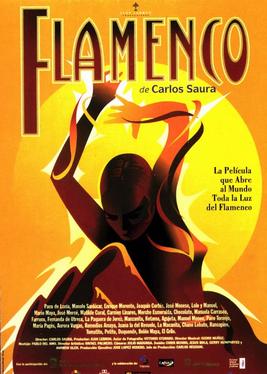
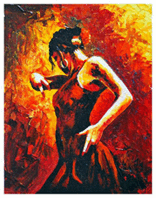
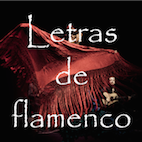
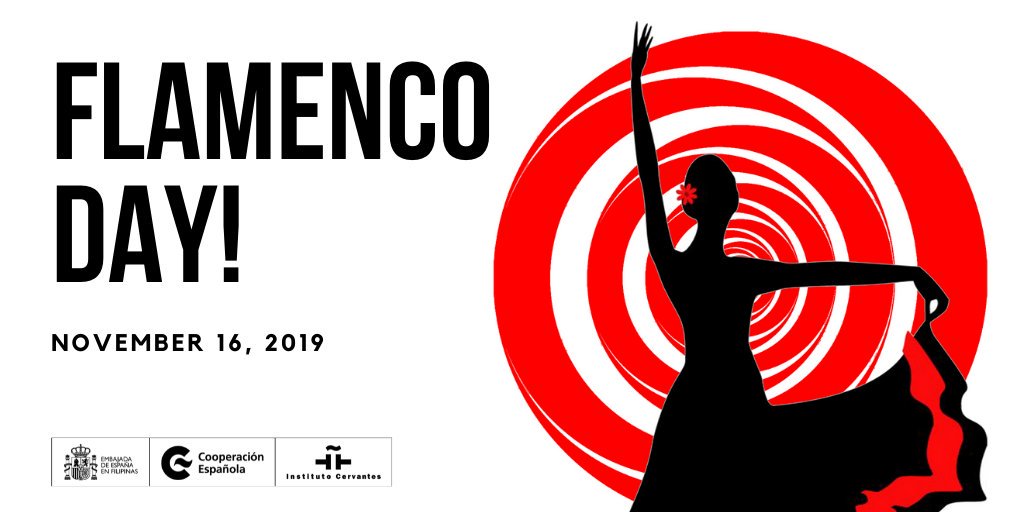



Deja un comentario